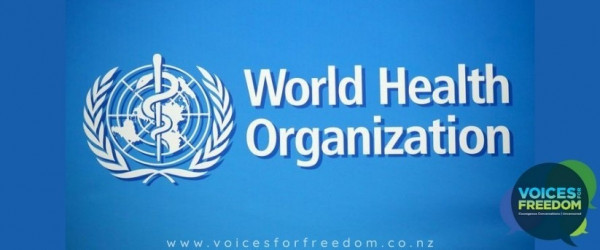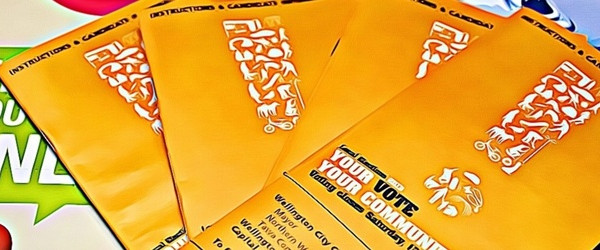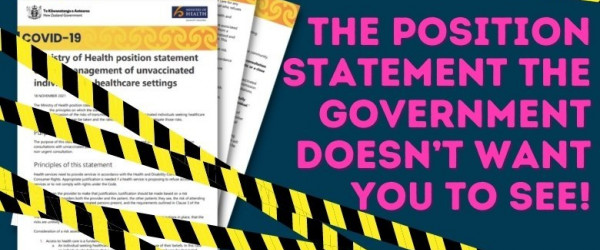
The Position Statement The Government Doesn’t Want You To See!
On Friday the Ministry of Health (MoH) published a new guidance document on its website: Ministry of Health position statement on the management of unvaccinated individuals in healthcare settings [1]. By Saturday morning the document was hidden behind a 403 restricted access warning – clearly, the average pleb on the street was not meant to be able to see such information.
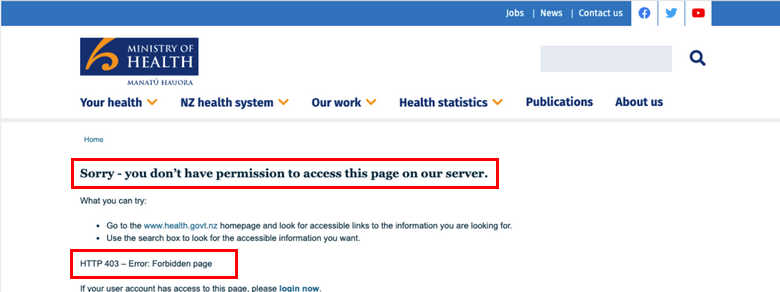
The document makes for interesting reading. It provides information for clinicians and health care providers on the finer points of the ethics and legalities of refusing care to non-vaccinated patients, as well as scenarios where tighter restrictions may be considered.
“Consideration of a risk assessment should include the following:
1. Access to health care is a fundamental right.
a. An individual seeking healthcare cannot be refused care because of their beliefs. In this case an individual who believes that a vaccine is harmful cannot be refused care for that belief.
b. A practitioner’s personal beliefs should not influence that practitioner’s duty of care for any individual. In this case a practitioner must not allow their opinion of an individual who refuses to be vaccinated to influence the care that they offer that individual.”
Voices for Freedom has been fielding concerned emails and messages from distraught New Zealanders for months now regarding discrimination in the health system with respect to individual COVID vaccination status.
Patients have described being bullied to take the vaccine in order to:
- Access chemotherapy.
- Accompany a loved one (including children) to hospital to receive treatment or undergo surgery.
- Retain their place on a public surgery list (and not be bumped down).
- Receive an organ transplant.
- Access routine services such as dentistry.
It would appear these new guidelines are in response to concerns regarding this overzealous and unscientific response to non-vaccinated patients.
In some cases, providers appear to have jumped completely off the deep end.
One would expect considerably less COVID anxiety in workplaces now that staff are mandated to be fully vaxxed. In light of the reports above, maybe clinicians and providers have a lack of faith in the vaccine’s ability to lessen their chances of developing moderate to severe disease and/or death should breakthrough infection occur.
SAFETY IN THE WORKPLACE
The document says that:
1. Health care workers have a right to be safe in their workplace in accordance with the Health and Safety at Work Act 2015 (the Act).
b. The actions taken to mitigate any risks must be reasonable and proportionate to that risk.
c. Any actions taken to mitigate risk must be based, wherever possible on evidence.”
Actions to mitigate risk must be “reasonable and proportionate” and “evidence” based.
The Government order mandates vaccination for workers to eliminate the risk of spread from unvaccinated individuals to others in the workplace. However, this assumption relies upon the problematic understanding that the vaccine prevents infection and transmission of the virus.
Spoiler: It doesn’t. The PM admitted that in this video way back in April 2021.
It would appear that the writers of this document have read the recent research showing that the vaccinated and non-vaccinated are both capable of catching and spreading the virus to those around them at similar rates [2]. If so, they would understand that discriminatory measures adopted by providers are based upon false assumptions and could not be deemed reasonable, proportionate, or evidence-based.
The document admits that vaccination status alone cannot be relied upon to justify discriminatory practice against the vaccine-free:
“Vaccination status is one of many risk factors for infection and transmission. There is currently no evidence that the application of an alternative pathway based solely on vaccination status, or the routine incorporation of unvaccinated asymptomatic individuals into a high-risk pathway is justified.”
The question is: Will providers take heed of this guidance, or will they try to twist the wording to suit?
The New Zealand Dental Association appears keen on the latter. Following the release of this document, the NZDA quickly issued an email update to its members by Friday afternoon, including:
“However, members may be alarmed that the MoH statement contains sentences such as:
‘The legislation will be very clear that access to essential services, including healthcare services, cannot be restricted based on vaccination status.’
‘Individuals cannot be refused access to health care.’
Further, it is my view that there will also be confusion when such statements sit beside others concerning responsibility for health and safety of yourselves, your staff and your own whanau.”
The contortion comes into play further with interpretations such as:
“‘2. The legislation will be very clear that access to essential services, including healthcare services, cannot be restricted based on vaccination status’. We read this as a statement about future law, not existing law.
4. An individual seeking healthcare cannot be refused care because of their beliefs. We agree. You can only decline based on risk.
5. But the consideration of risk – dentistry is high risk – may lead you to limit services to urgent or emergency care for unvaccinated patients.
6. The nature of, and the particular risk associated with the actual required treatment, may also lead you to limit or decline provision of that treatment.
7. The practitioner’s own health status (or that of your staff or close whanau) e.g. being immunocompromised, may lead you to limit or decline provision of services to unvaccinated patients.”
It seems they missed the memo about the vaccinated being able to transmit the virus too.
Thankfully by point eight they appear to have remembered their ethical obligations, though how this might work in a practical sense if their guidance is adopted by the majority of providers will be interesting to see:
8. If limiting services (particularly emergency / urgent care) then ethically you must ensure the patient has access elsewhere to the service.
What is an individual to do if there are no other local providers willing to accept non-vaccinated patients? Who will be responsible for oversight on such matters?
THE RISKS OF TRANSMISSION FROM UNVACCINATED INDIVIDUALS
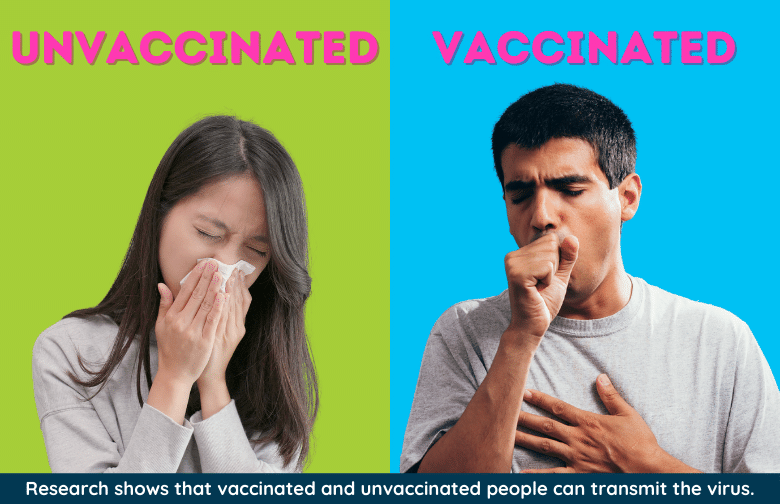
The document addresses the issue of perception contributing to bias in a clinical setting:
“There are concerns that the perceived increased risk from in person contact with unvaccinated patients compared to vaccinated patients is sufficient to warrant actions to manage that risk.
There are two factors to consider:
- the difference in risk between the two groups, and if this is clinically significant
- the absolute magnitude of the risk.”
It is this very perception that is causing the rest of society and industry to double-down on voluntary mandates within non-ordered workplaces and commercial and private premises.
When a lie is repeated often enough it becomes the truth in the minds of the masses. The Government and media do not appear to be particularly interested in addressing such misperceptions in a hurry.
The providers are being asked to evaluate the actual risks and whether or not they are clinically significant, which would require investigating the research. But is this likely to happen? Is the wave of hysteria simply too enormous to choose to be the lone figure standing in front of the tsunami holding up a fistful of scientific papers? Has public opinion become too powerful to shift?
THE PARADOX OF THE VACCINATED BECOMING THE SPREADERS OF DISEASE
The prevalence of disease in a community is identified as having a bearing on transmission from both vaccinated and unvaccinated alike. It begs the question: What is the point of ordering people to take a product that fails under widespread viral pressure?
When community case numbers are high they state:
“Asymptomatic infection is the issue, not the vaccination status of the patient…
In addition, in this situation the difference in the risk of transmission between vaccinated and unvaccinated people will be negligible. When the prevalence of disease in the community is high, the risk of transmission from any individual is not negligible and is likely to warrant application of mitigations for all consultations.”
As a society we have been encouraged to accept the theory of vaccine-induced herd immunity when it comes to vaccine targeted infections. Smallpox, polio, measles, and other infections are often raised as examples of the success of vaccination in general.
We are conditioned to think along these lines when the authorities implore us to take the jab to protect our whānau, friends, and the vulnerable. However, we are simultaneously told that the COVID vaccine does not prevent an individual from catching or passing on the virus, and that they are unsure of the duration of coverage from the vaccine. Waning efficacy will result in the need for repeated booster injections with the programme for the third dose having been announced recently in NZ. The goalposts are continuously on the move.
The public is being trained to accept a new paradigm when it comes to the new COVID reality.
Similar observations have been made regarding the MMR vaccine and measles infection in fully vaccinated populations due to primary and secondary vaccine failure [3]. These are scenarios where individuals fail to mount immunity as a result of vaccination, or where immunity wanes over time leaving individuals vulnerable to infection (described as 2-10% of all vaccinees). Neither of these scenarios are measured at a societal level, though, with the mere vaccination status of the person being sufficient to presume immunity. It doesn’t matter if 100% of the population is vaccinated, outbreaks will still occur.
The following statement clearly shows that we cannot expect the vaccine to provide protection in the workplace or society as a whole:
“When there is high COVID-19 vaccine coverage (i.e., above 80 percent of eligible people are fully vaccinated), transmission is more likely to occur from a vaccinated than an unvaccinated individual.
Developing a separate pathway for vaccinated and unvaccinated individuals will not prevent the risk of inadvertently seeing an infectious person (regardless of vaccination status) without the health care worker being aware, using appropriate personal protective equipment and/or being in an appropriate physical environment.”
THE SUMMARY
- Individuals cannot be refused access to health care.
- Restrictions to access to health care must be informed by a risk assessment, and the onus is upon the provider to justify that the risks are sufficiently high to support those restrictions.
- Vaccination status is one of many risk factors for infection and transmission. There is currently no evidence that the application of an alternative pathway based solely on vaccination status, or the routine incorporation of unvaccinated asymptomatic individuals into a high-risk pathway is justified.
- Pathways exist for decreasing the risk of transmission from any asymptomatic individual. These pathways must be utilised effectively prior to the introduction of additional interventions.”
It may pay for people to download or bookmark this document for reference in the coming months as society navigates this issue and providers test out different requirements for the new two class system.
Our PM kindly assures us that non-vaccinated individuals will not be discriminated against with respect to access to essential services like supermarkets and healthcare, but we have heard such assurances before. If perceived ‘reasonable grounds’ for a shift in messaging are adopted by the media and pushed out via the well-oiled propaganda machine, the public is likely to be asked to accept yet another 180° turn without batting an eye.
REFERENCES:
[1] https://mcusercontent.com/e0f05f1f51c69ca2ccb1bf848/files/8d46e90a-37d9-3a3d-6699-0d0c806e9ace/Ministry_of_Health_position_statement_on_the_management_of_unvaccinated_individuals_in_healthcare_settings.pdf [2] https://voicesforfreedom.co.nz/blog/post/jabs-do-not-reduce-riskhttps://www.thelancet.com/journals/laninf/article/PIIS1473-3099(21)00648-4/fulltext [3] https://www.ncbi.nlm.nih.gov/pmc/articles/PMC3905323/
Thanks for reading and sharing! Remember to sign up to our mailing list to keep up with the latest news.
If you value what we are up to at Voices and would like to support our ongoing work you can donate to us and support our nationwide public education campaigns (webinars, flyers, billboards...) and other initiatives to speak up and push back for your freedoms.

